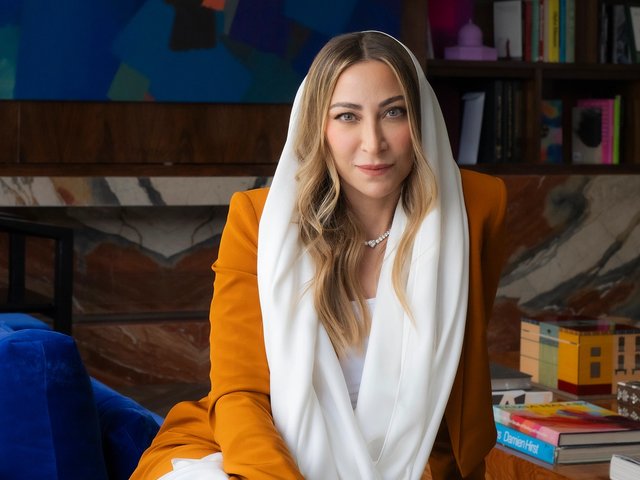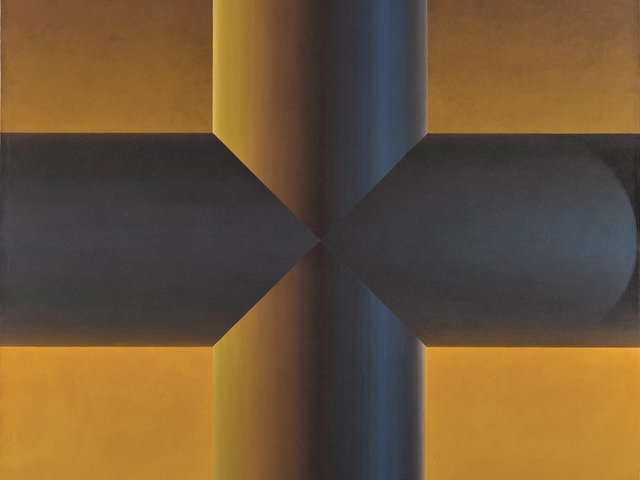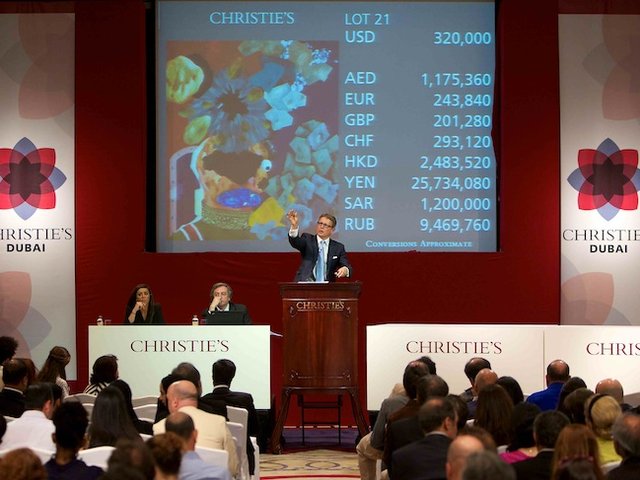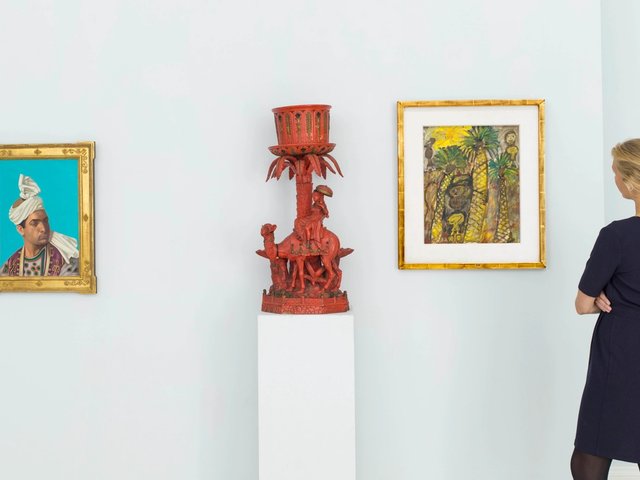As all art world eyes turn to the Arabian Gulf—with the launch of Art Basel Qatar and the burgeoning institutional development in Saudi Arabia—the market for art from the Middle East also appears to be on the up.
In May, Christie’s for the first time delivered a white-glove sale for its online Modern and contemporary Middle Eastern art auction in Dubai. The sale included a section dedicated to Saudi artists, with almost all the works selling over their high estimates.
“Judging by recent auction records that have been set by numerous artists from the Arab world and conversations with curators of major collections across the globe, it seems that demand for Arab art has expanded beyond the region into Western and Eastern collections,” says Sultan Sooud al-Qassemi, the founder of the Barjeel Art Foundation, a United Arab Emirates-based collection of almost 2,000 works of Arab art. “We are very happy; over the last two or three years we’ve been performing extremely well,” says Ridha Moumni, the chairman of Christie’s Middle East and Africa. Christie’s is celebrating 25 years in the UAE with a series of sales and exhibitions.
This includes a non-selling exhibition of institutional proportions at its London headquarters this summer on the work of the Syrian artist Marwan (1934-2016). Marwan: A Soul in Exile includes more than 150 works from major private and institutional collections, including the Barjeel Art Foundation; the Ramzi and Saeda Dalloul Art Foundation in Beirut (both of which are sponsoring the exhibition, among others); the Pinault Collection in Paris; and the Berlinische Galerie in Berlin. “It has been a lot of work to secure them, but I’m pretty confident that we have gathered some of the most important masterpieces by Marwan,” says Moumni, who has organised the new exhibition.
Born in Damascus, Marwan Kassab Bachi—known simply as Marwan—moved to Germany in the late 1950s and spent the rest of his life there. Influenced stylistically by German Expressionism and the Neue Wilde artists like Georg Baselitz and Anselm Kiefer but inspired thematically by Arab political and social struggles, Marwan is best known for his “face landscapes”: layered, painted portraits that evoke both a depth of emotion and undulating expanses.
“Marwan is amongst the pioneering artists that skillfully bridged cultural practices between the east and the west,” says Qassemi, whose foundation also organised a show on the artist at the Lempertz auction house in Berlin in 2023. Marwan’s last solo show in London was at the Mosaic Rooms in 2015.
It is important for me that we are not only an institution that does business there and sells artworks from the [Middle East], but we also actively contribute to the sceneRidha Moumni, chairman of Christie’s Middle East and Africa
Platform for the Middle East
But why is an auction house putting on a major show where nothing is for sale? “We want to be a platform and an actor within the cultural field,” Moumni says. “It is important for me that we are not only an institution that goes to the Middle East, does business there and sells artworks from the region, but we also actively contribute to the scene.”
The show on Marwan is, in fact, Christie’s third non-selling exhibition of Arab art held in London over the past three summers. The first in 2023, titled Kawkaba, was a selection of works by Arab artists from the Barjeel Art Foundation and the second, held last summer, was a solo exhibition of the Saudi artist Ahmed Mater. Alongside each summer show, Christie’s Education runs a three-day intensive course introducing students to Modern and contemporary art from the Middle East. The shows are an opportunity to meet potential European clients as well as the many people from the Gulf who travel to London for the season, Moumni adds. He also considers the institutional partnerships that the exhibitions have fostered to be an important benefit for Christie’s. This year a version of Mater’s exhibition travelled to UCCA Edge in Shanghai (8 March-8 June) and the Marwan show is also expected to travel to an institution.
Qassemi attributes the rising market interest in Middle Eastern art in part to “the increase in the number of publications and access to archives as well as documentation that has shed light on these artists’ practices”. Moumni adds that these have led to more international exhibitions and events that include artists from the region, pointing in particular to Adriano Pedrosa’s last Venice Biennale that focused on artists from the Global South. He expects Middle Eastern artists will also feature heavily in next year’s biennial, organised by the late Cameroonian curator Koyo Kouoh, who asked him for introductions to institutions in the region when they met in Cape Town in February this year. “It’s very exciting to be working in an auction house in the Middle East,” Moumni says. “You can feel the deep impact of all these projects and sales on the region’s art scene today, but also on the art scene of tomorrow.”
• Marwan: A Soul in Exile, Christie's, London, 16 July-22 August






